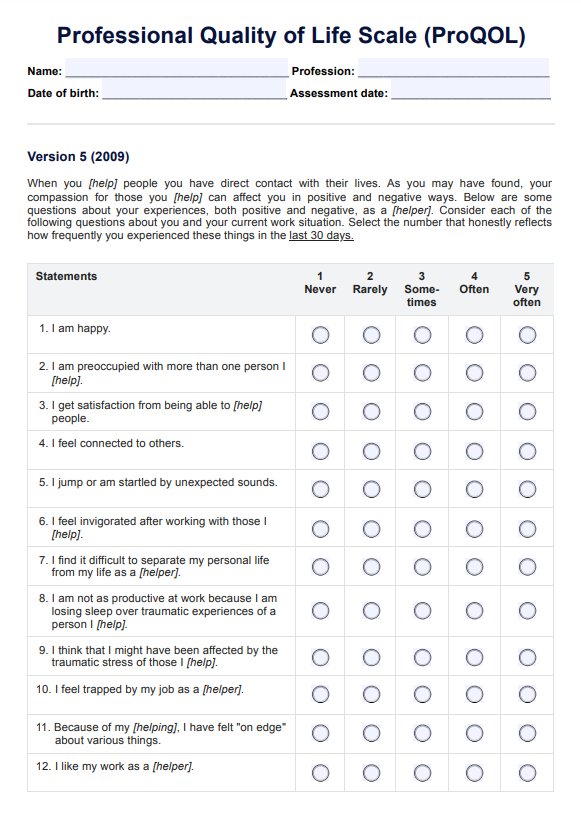Secondary trauma refers to the emotional duress that results when an individual hears about the firsthand trauma experiences of another. It is a common occurrence among professionals who work with trauma-exposed populations, such as social service workers.

Professional Quality of Life Scale (ProQOL)
Assess the positive and negative aspects of working in helping professions with the Professional Quality of Life Scale (ProQOL).
Use Template
Professional Quality of Life Scale (ProQOL) Template
Commonly asked questions
Social service workers are essential contributors to the helping professions. They play a crucial role in assisting individuals who have experienced trauma.
Yes, it has proven to be a valid measure of the three aspects of the roles of helping professions.
EHR and practice management software
Get started for free
*No credit card required
Free
$0/usd
Unlimited clients
Telehealth
1GB of storage
Client portal text
Automated billing and online payments











